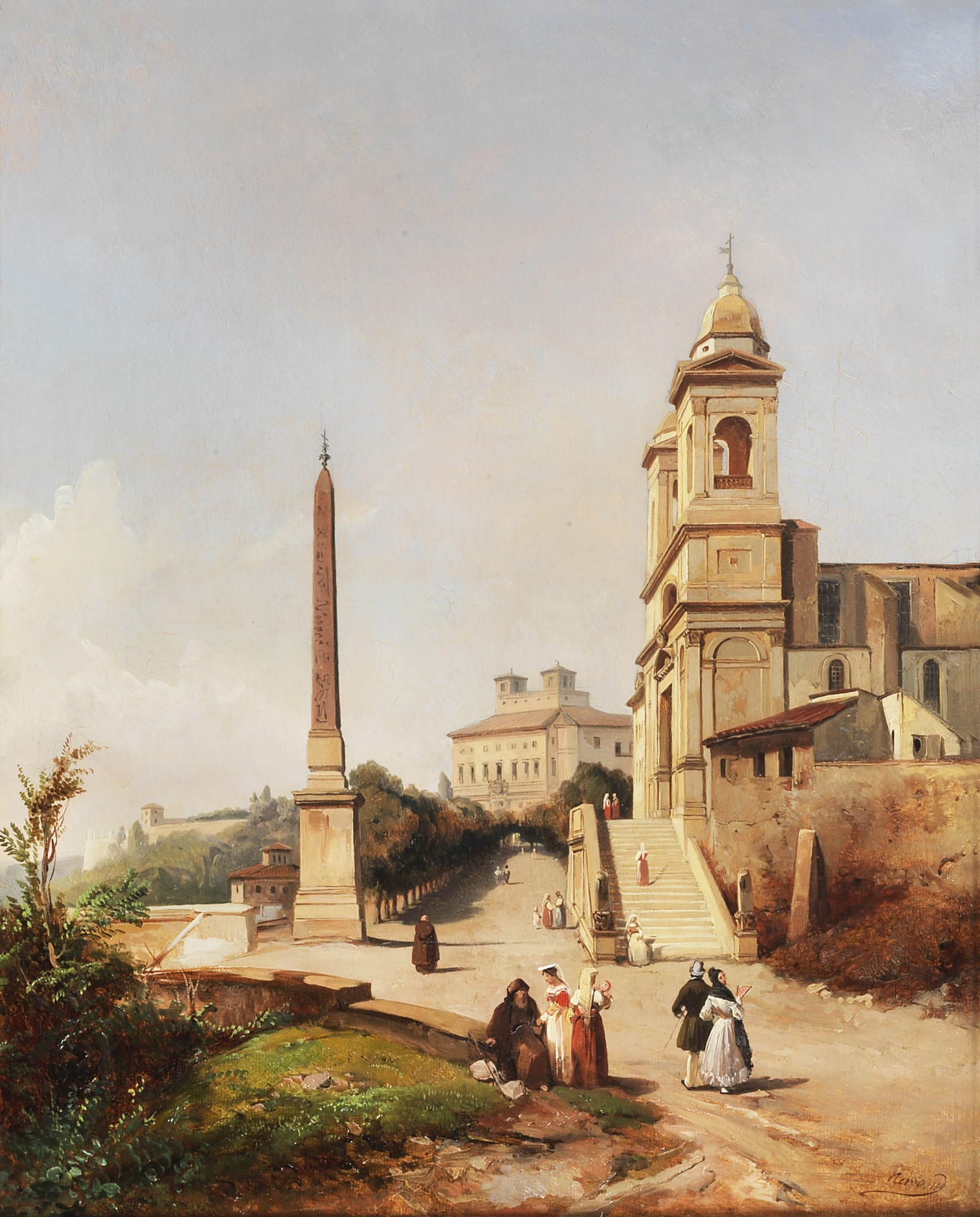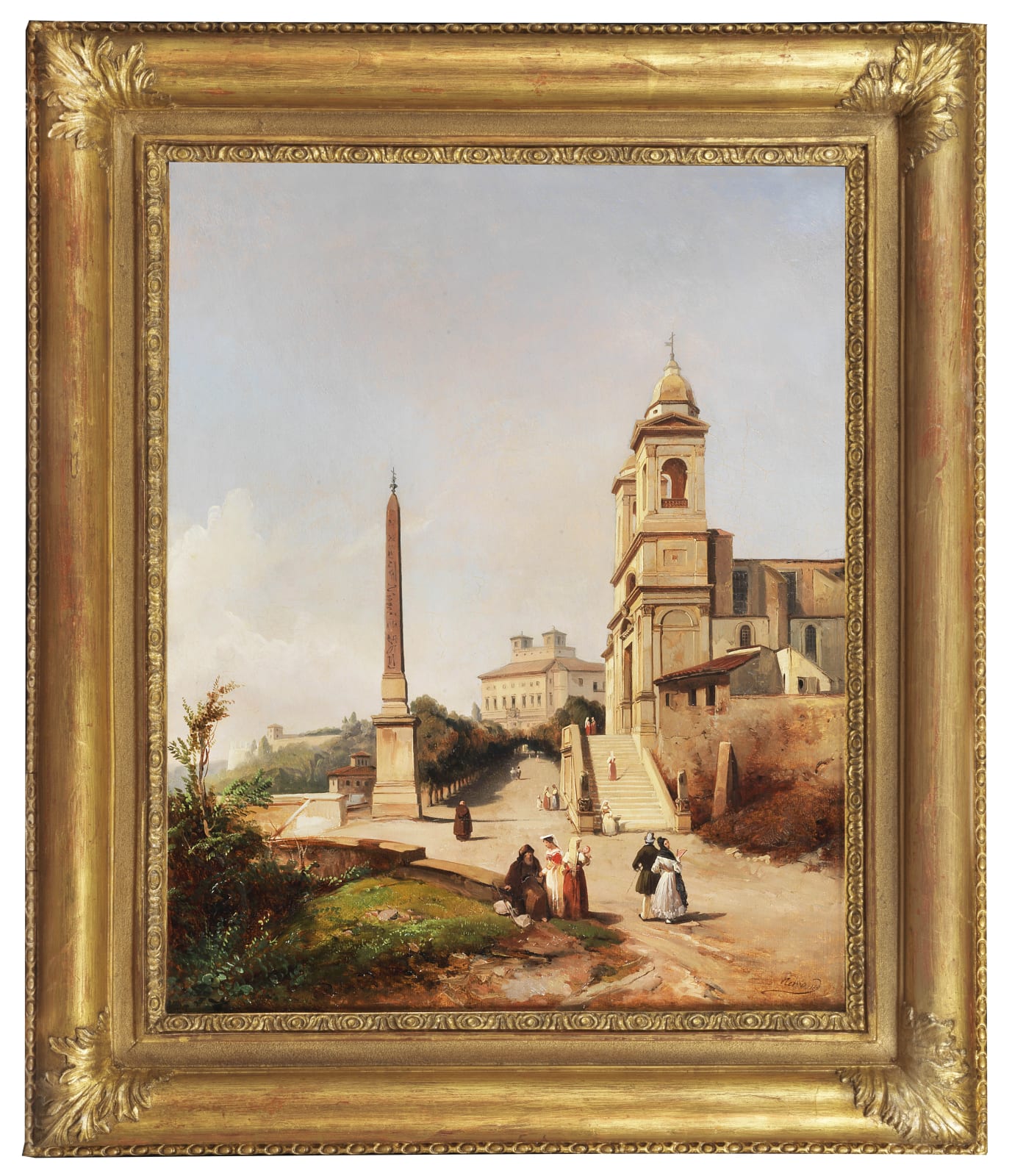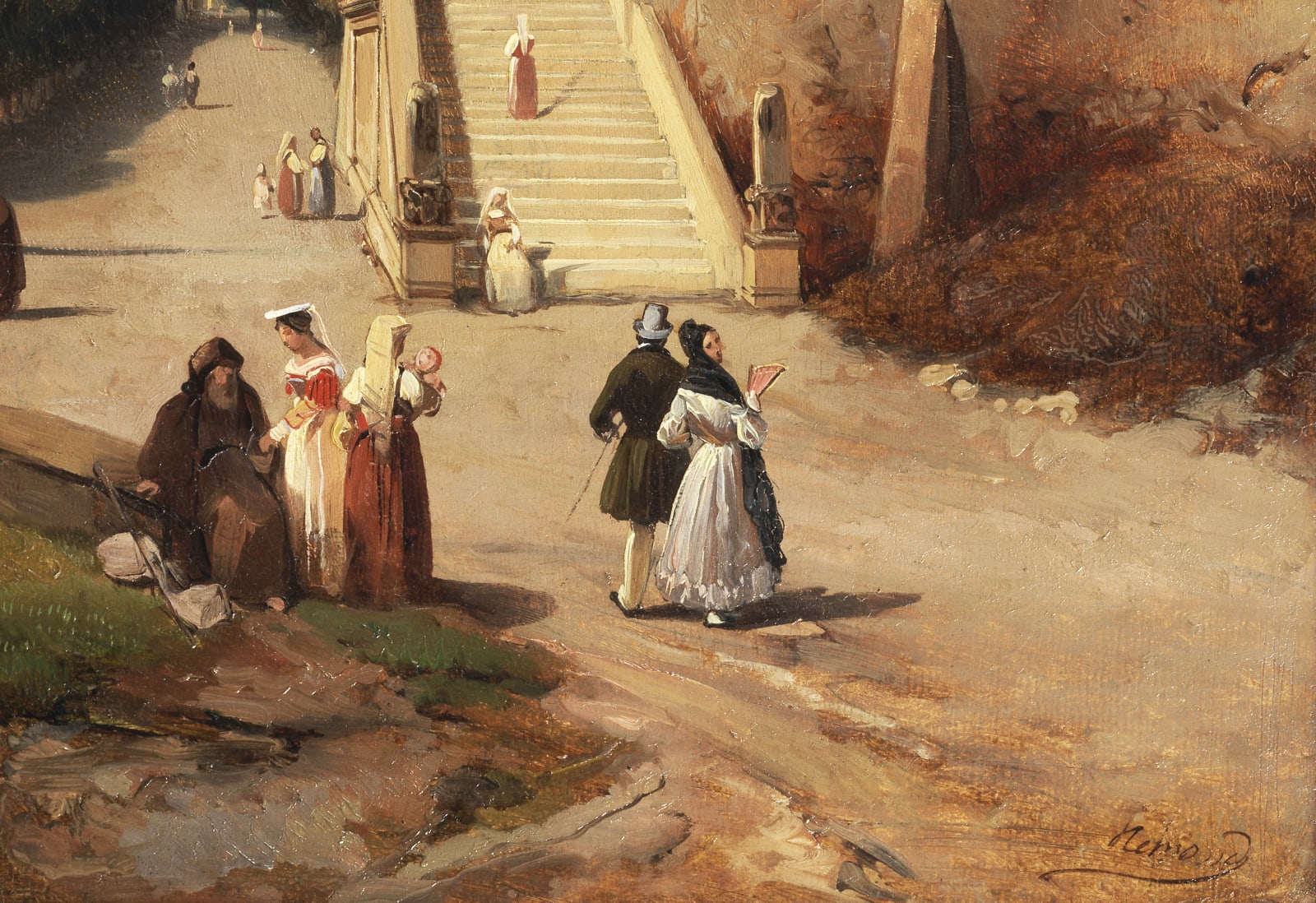Jean Charles Joseph RÉMOND 1795-1875
Further images
This picture, an oil on paper transferred onto canvas and never recently shown in public, comes from an important French private collection. It depicts the esplanade before the church of Trinità de’ Monti, one of the most intimate and best-loved scenes in 19th century Rome.
The view, much loved by both 19th century painters and painters of other eras, was portrayed by numerous artists including Granet, Corot, Ingres and Caffi, to name but a few.
Rémond set up his easel at the junction of the Via Sistina and the Via Gregoriana, with Palazzetto Zuccari behind him. On the right we see the bell towers of the 16th century church of Trinità dei Monti with the two flights of stairs leading up to the entrance, while in front of the church’s façade there stands the Sallustian Obelisk erected by order of Pope Pius VI in 1787. An interesting feature of the obelisk is the fact that the hieroglyphs adorning it were carved in Rome in the 3rd century AD.
Beyond the obelisk and the church, a pathway bordered by holm oaks leads to the Villa Medici, then the seat of the prestigious Académie de France à Rome. The Academy’s proximity may, in part, justify artists’ fondness for this picturesque setting, which was portrayed on more than one occasion from the towers of the Villa itself.
In the middle distance, the panorama is completed by the rotunda overlooking the Casina Valadier on the Pincio.
Rémond won the second edition of the Prix de Rome for “historical landscapes” in 1821 and was thus given the opportunity to spend four years at the Villa Medici in Rome. He is most likely to have painted this picture in the course of that first stay in Rome between 1821 and 1824.
The view is enlivened by the presence of several figures dressed in the fashions of the time. The young girl strolling with her fiancé in the foreground while turning her conspiratorial gaze towards the painter is especially charming.
JOIN OUR MAILING LIST
Subscribe to our mailing list in order to receive news on new acquisitions, exhibitions, special previews and more!
* denotes required fields
We will process the personal data you have supplied to communicate with you in accordance with our Privacy Policy. You can unsubscribe or change your preferences at any time by clicking the link in our emails.





